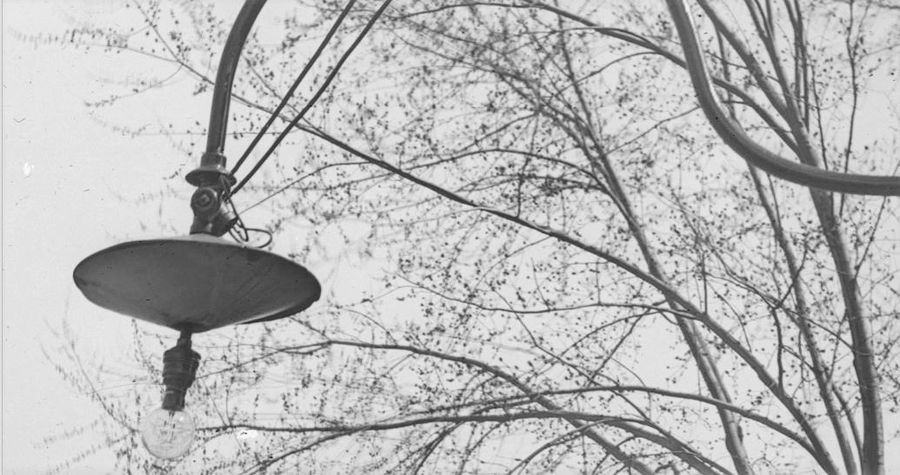Hingham Municipal Lighting Plant, MA, c.1900, Incandescent Fixture with Bernstein Lamp.
By Joe Maurath, Jr.; posted February 21, 2021
View Original: Click to zoom, then click to magnify (1035 x 546) 184KB

|
These lightbulbs competed with Thomas Edison's traditional screw base bulbs including those designed specifically for series street lighting systems. As shown, the carbon-filament, "hairpin" shaped filaments employed within these Bernstein bulbs had a brass screw base on the outside of its shell with a contact ring around the center. The latter were manufactured mounted with one connecting ring on top of the other atop the bulbs base contact area. In between these was a small piece of mica in between the two thin springy pieces of brass that would instantly electrically short through in case the lamp failed, keeping the rest of the series loop lit. The stud extended from the bulb's socket, also with a shorting provision for series continuity. The Bernstein series bulbs became problemsome through the years, notably on for allowing water getting into the fixtures' socket (as you can easily imagine by viewing the exposed bulb and socket in the above photo). Commencing in 1901 the Hingham Municipal Lighting Plant began to update these lights (427 fixtures having 32-candlepower bulbs) with ones with Edison screw-bases and plug-in sockets. The latter were more energy-efficient and lasted longer. During this conversion the brackets, shades and fixtures were repainted or replaced with ones of similar appearance. The upgraded fixtures with new "mogul screw base" threads were far more reliable and weatherproof. Please refer to: [id=618534323]. The manager's report for 1901 regarding thus issue stated: "Many of the street fixtures have been in service for some years and which on account of general deterioration have caused more or less trouble during wet weather on account of the impossibility of keeping out water, have been replaced with fixtures of an improved pattern, and it expected during the coming year the entire line will be equipped with those of the latest type." This was a timely and tedious task and by the end of 1908 the all of the old Bernstein street-lighting bulbs and sockets were removed from service. Click "Next" for an overall view of the shown fixture and its surroundings. |